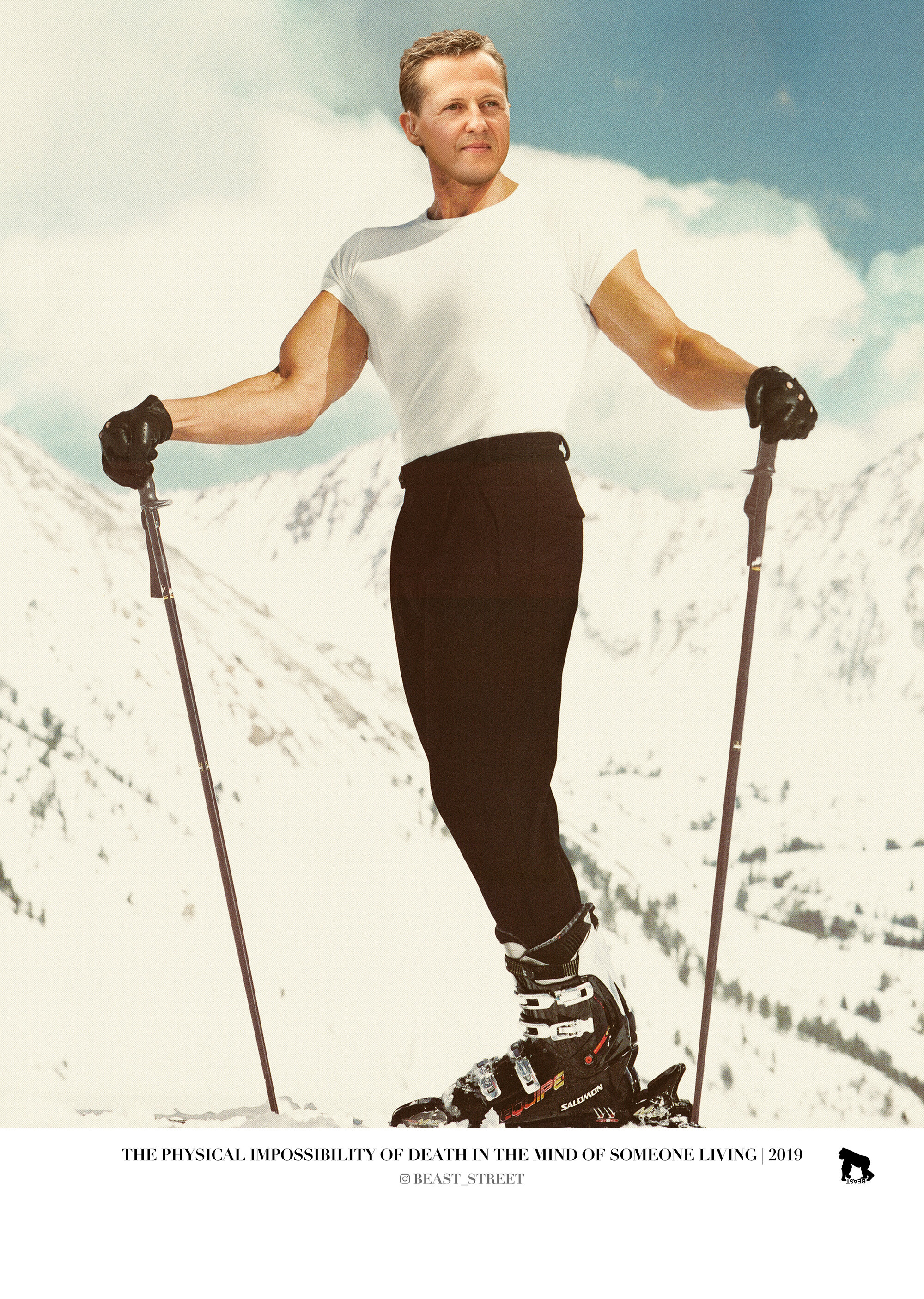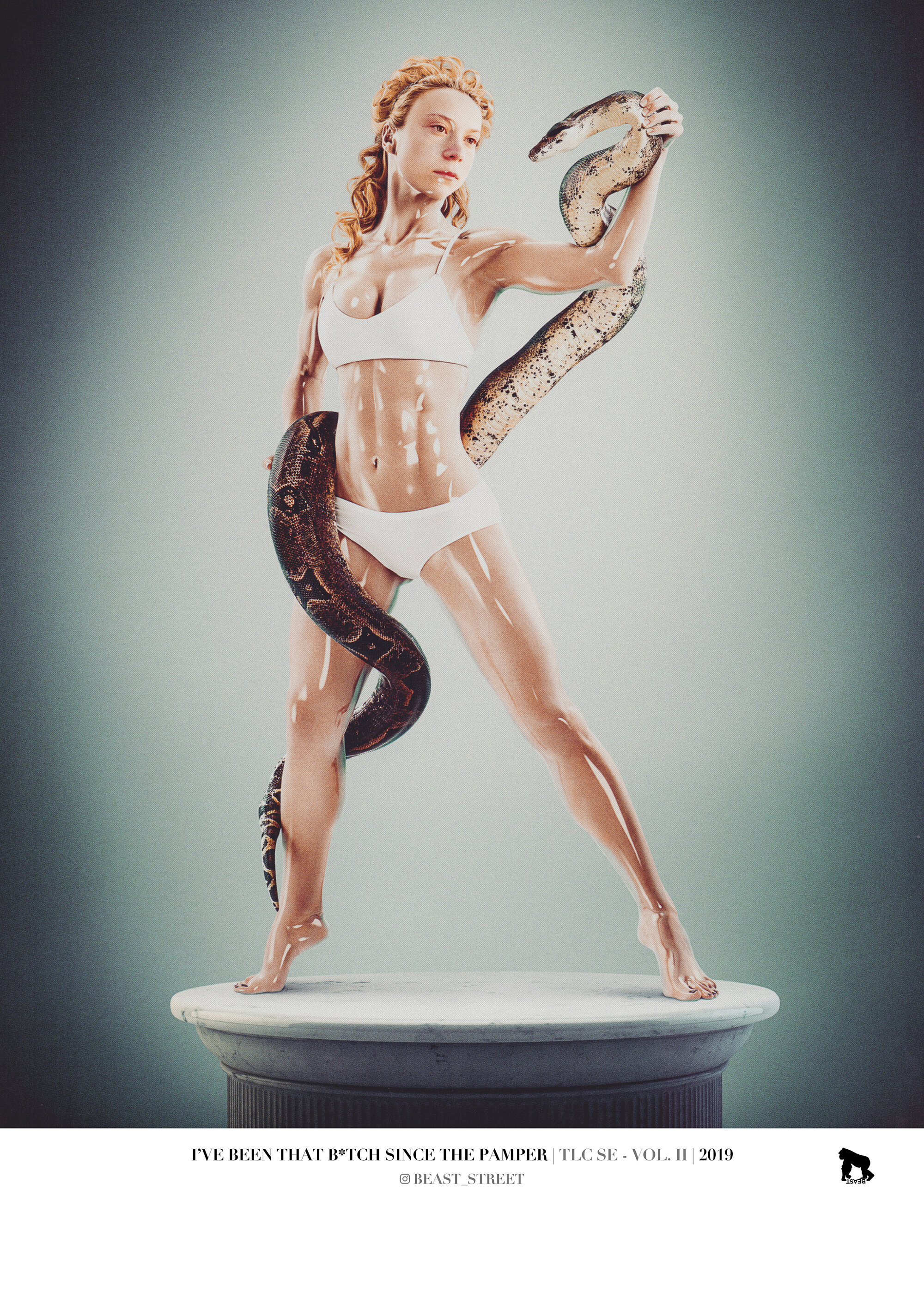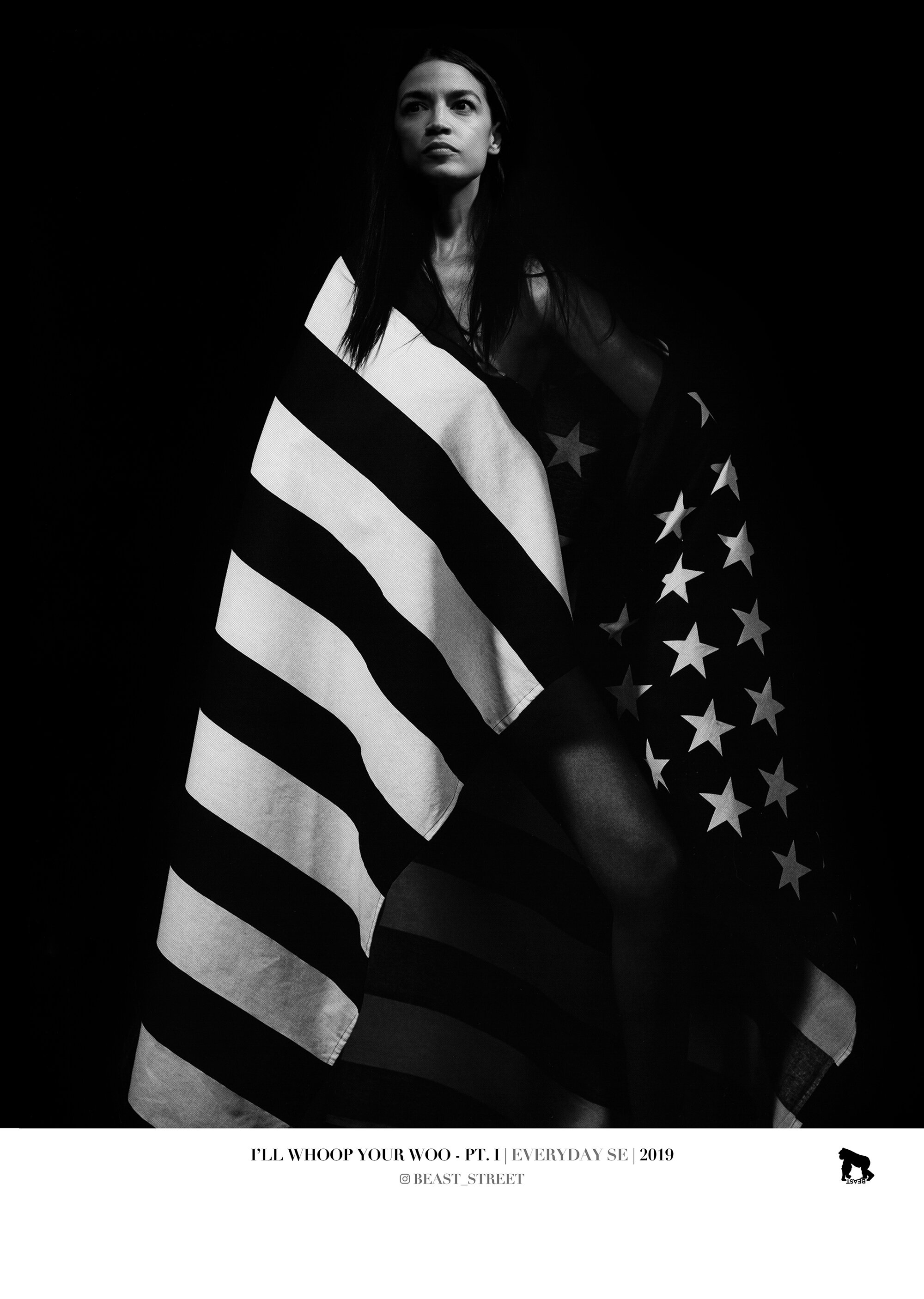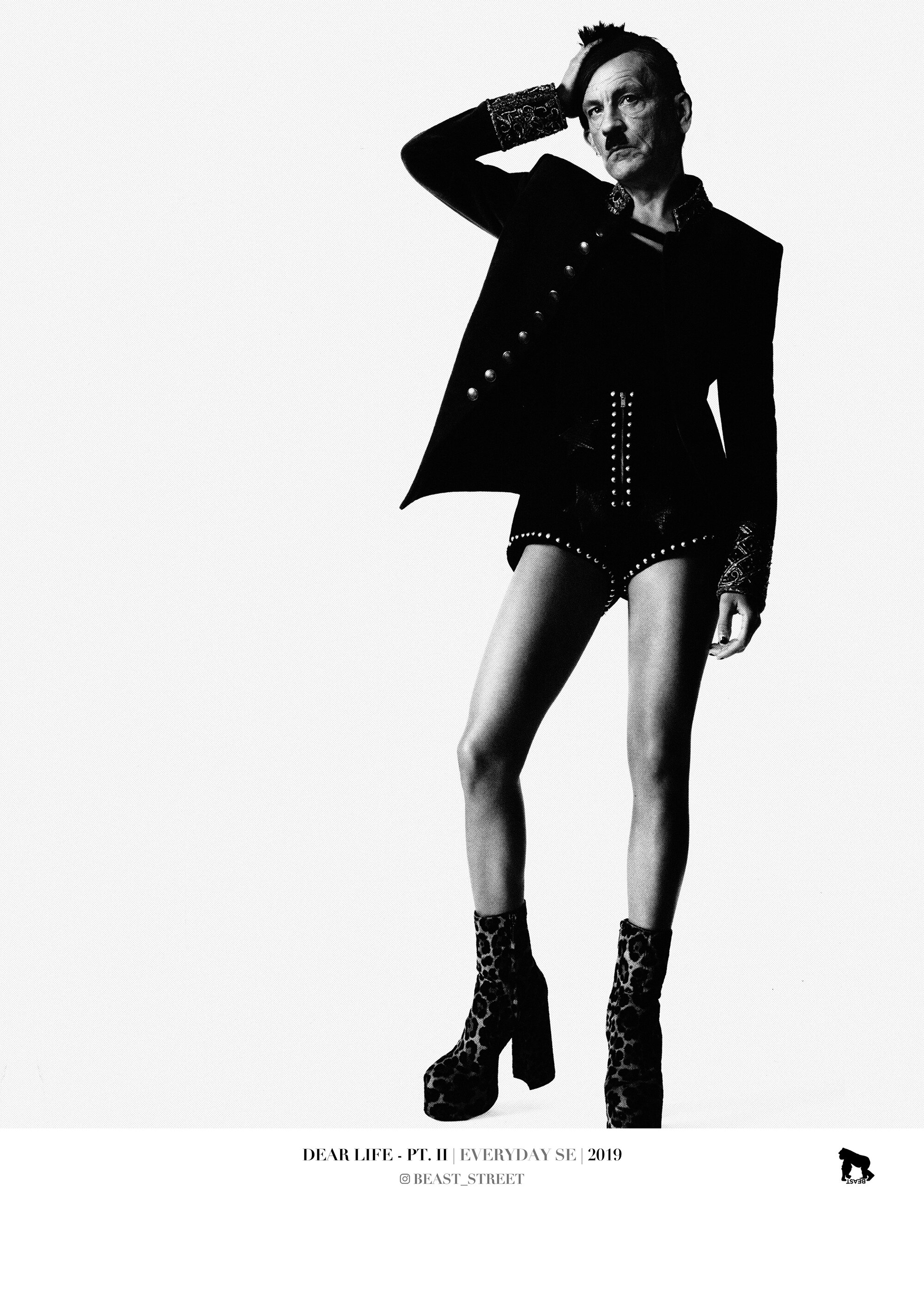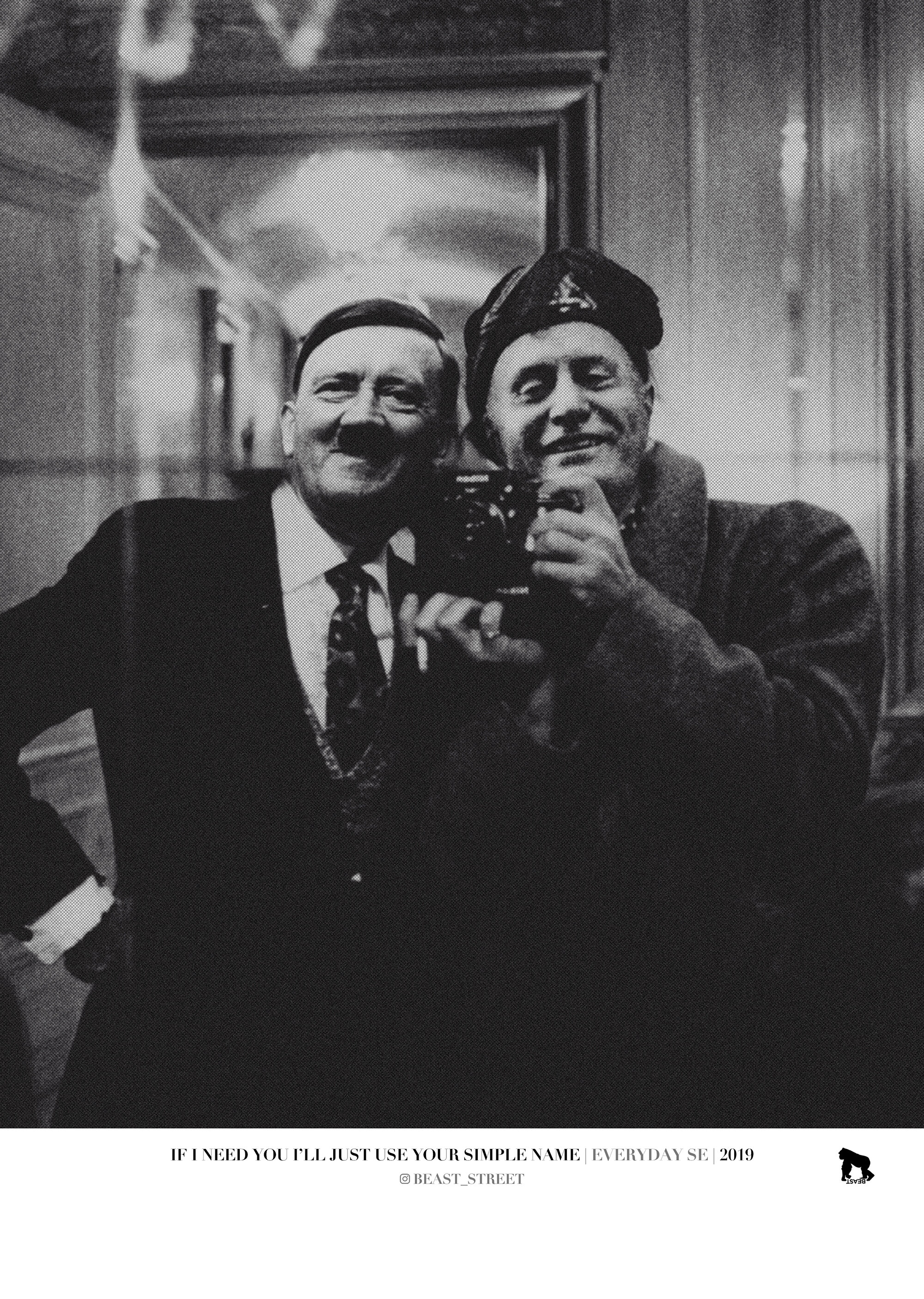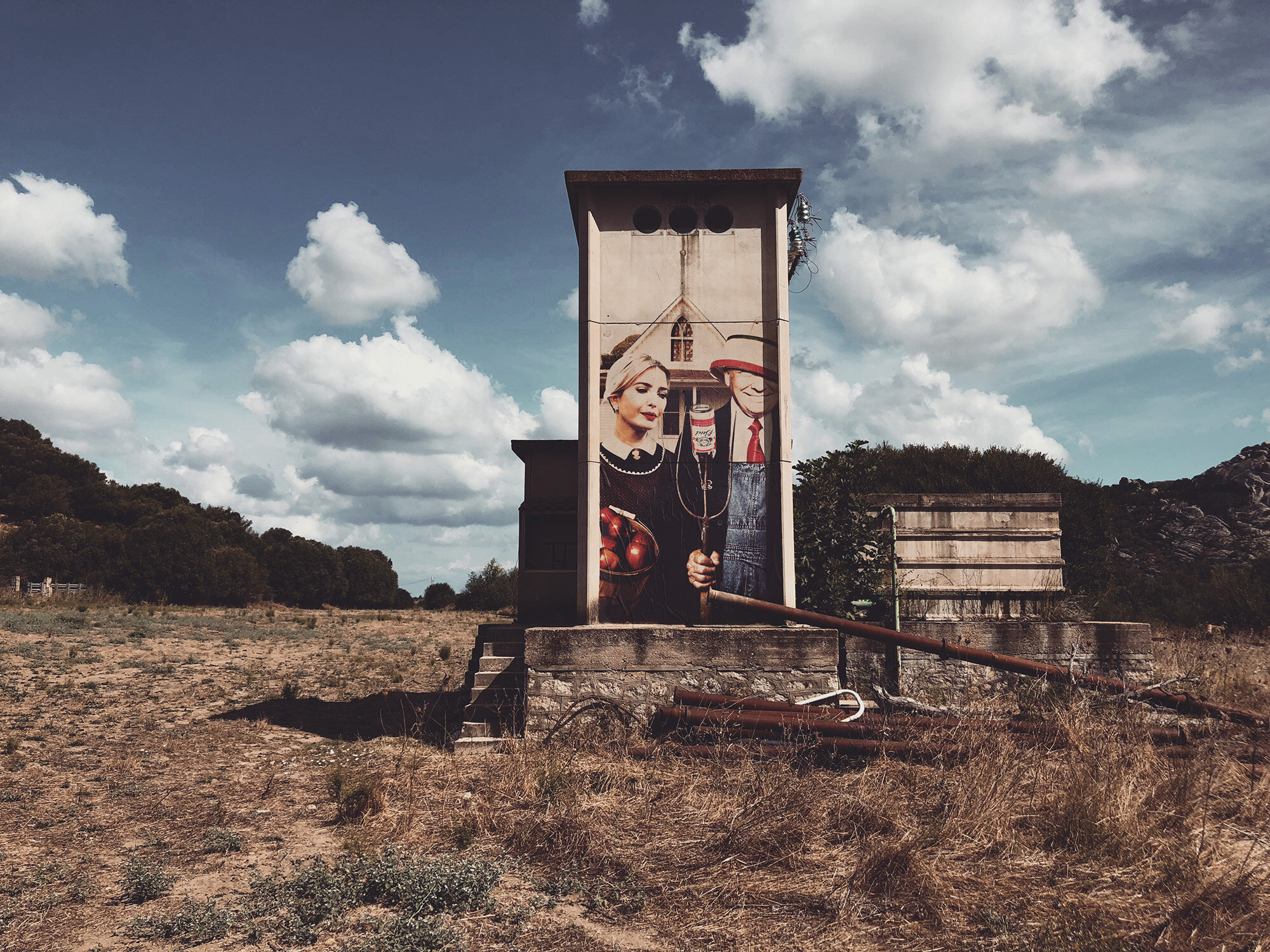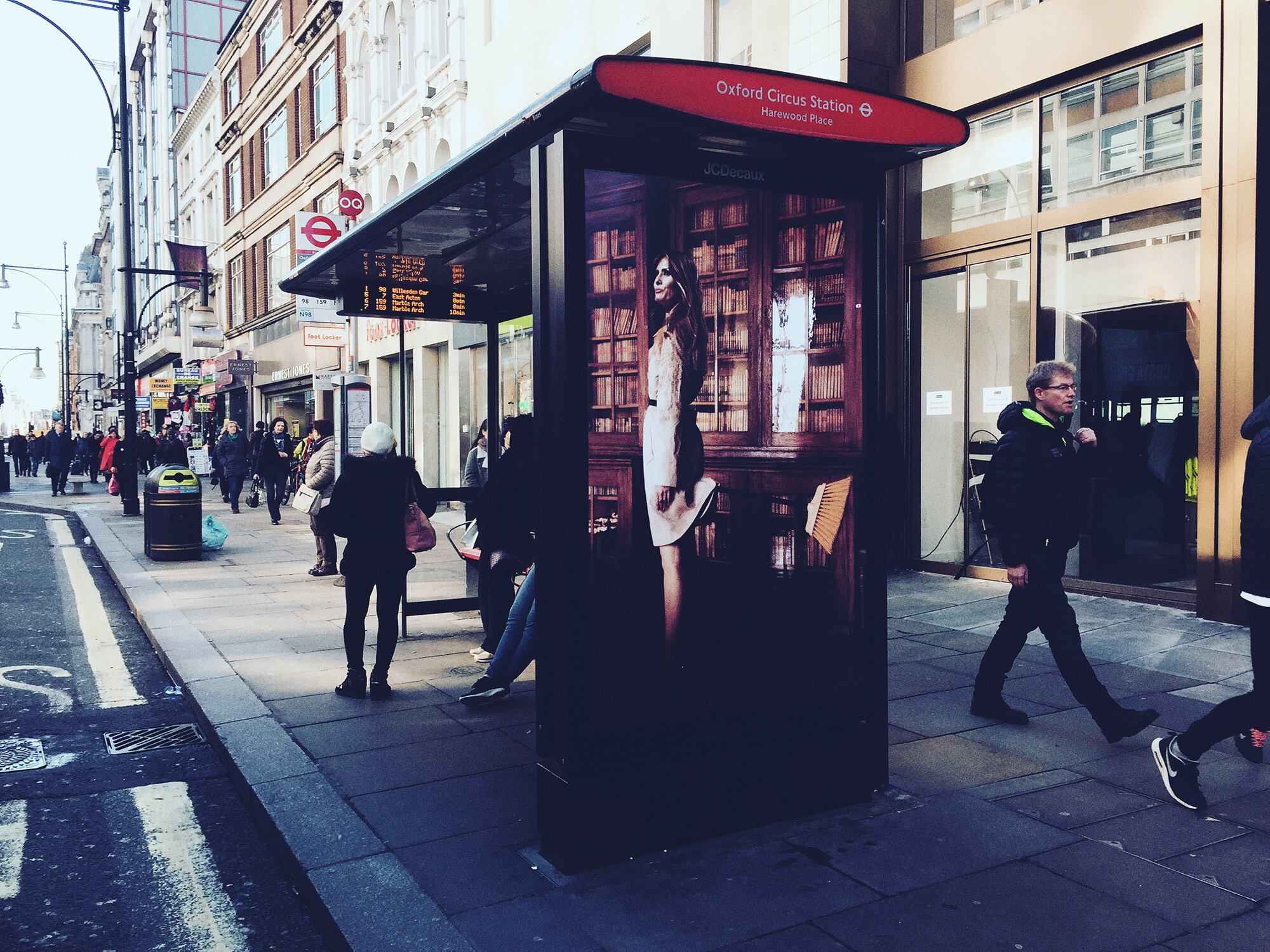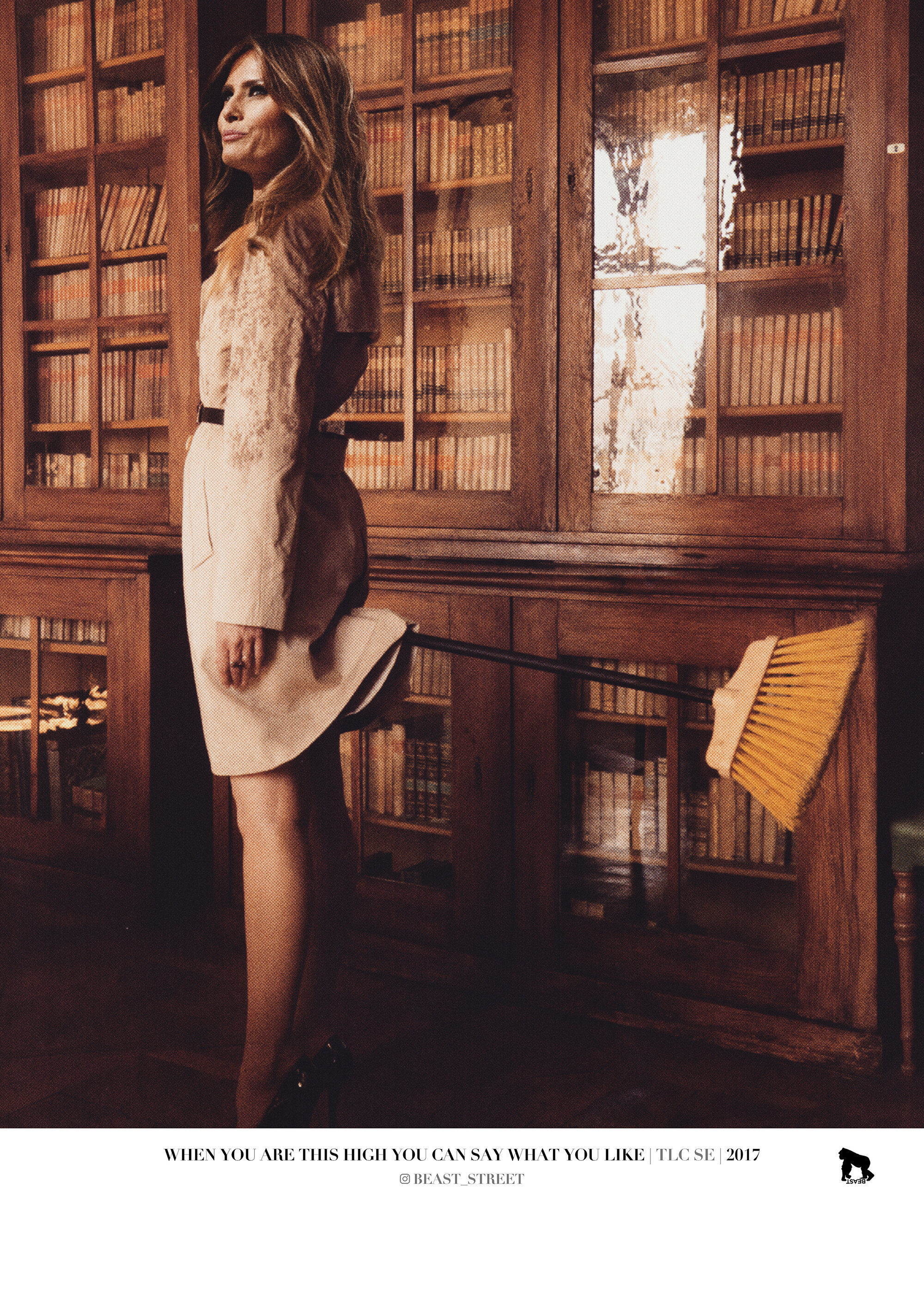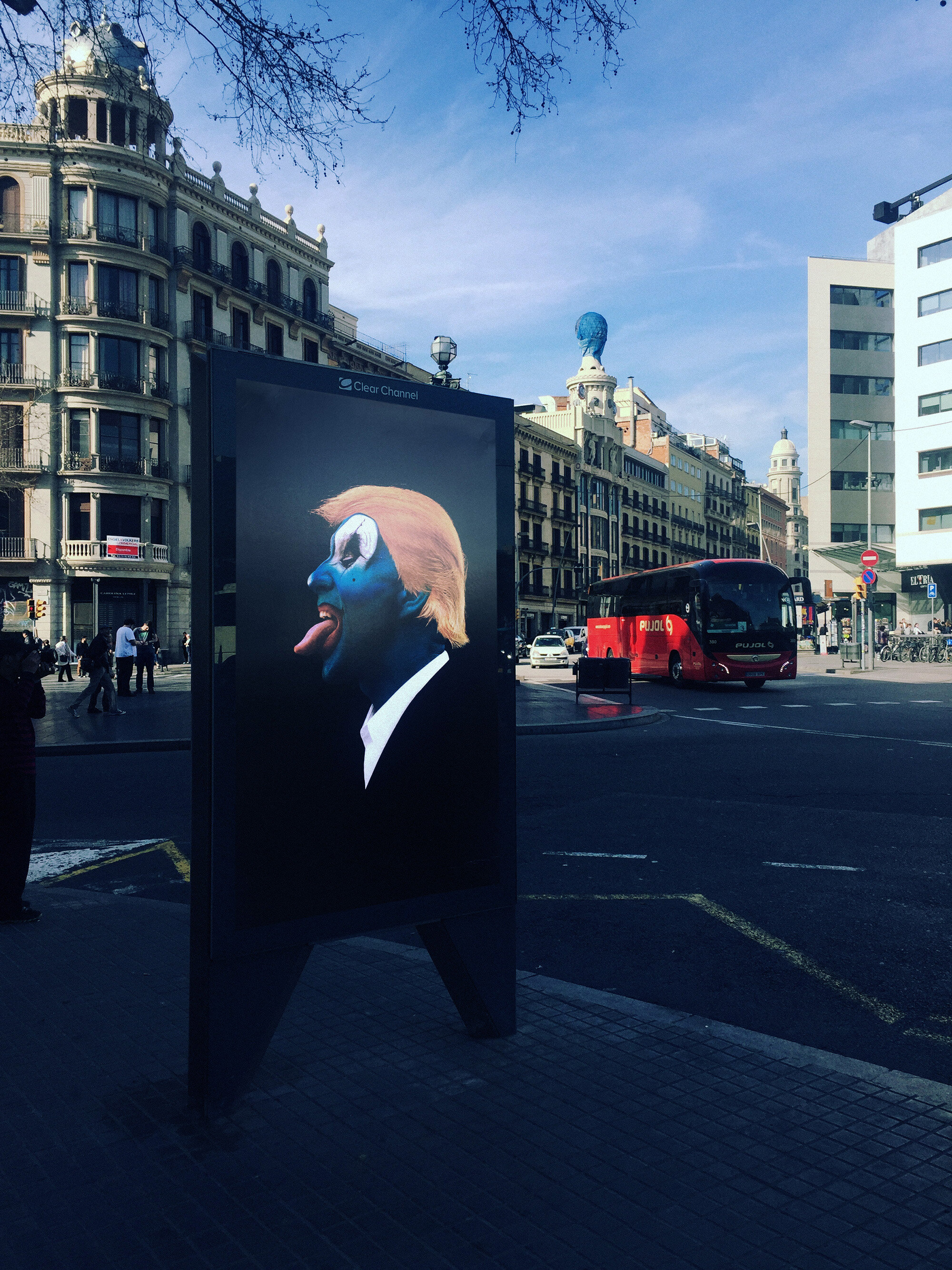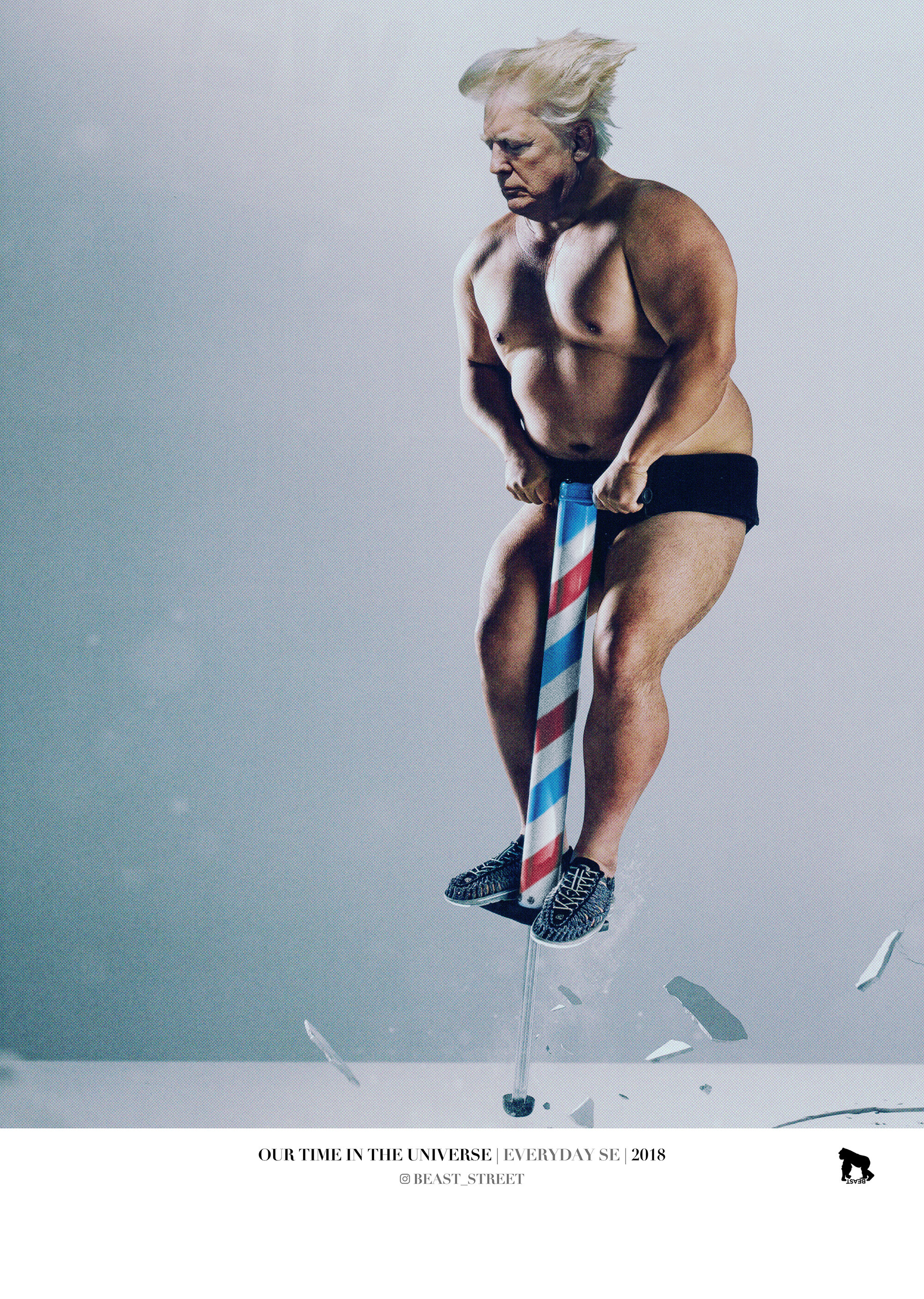Interview with Beast
Established 2009, Beast has produced more than 200 urban installations in more than 40 cities across Europe, United States and Japan. With his ironic and provocative collages, Beast deconstructs well-known faces of politics and the world of entertainment, recreating scenarios to the limit of veracity. At the beginnings his distinguished mash-ups, framed in gold and freely placed on the streets, have quickly attracted the attention of media, challenging the urban audience to question the truthfulness of the information, in a continuous play of references between the real world and the ideal world proposed by the artist. Since then he moved to bigger size artworks, pasting up giant posters on the walls of the main European cities, replacing advertising posters with his own artworks and creating giant murals on abandoned buildings’ facades in the countryside.
Beast is considered a “visual manipulator”, all of his collages are made by hundreds of layers taken from the photographic archive of our history, all the elements are aesthetically updated and combined in order to create a new image, a “true fake” that however false, it may seem plausible to the viewer's eye. He considers the streets as an open canvas, working with urban environments his “open-air galleries” promote an idea of democratic art, shifting the spotlight from the museum work to the immediate accessibility of the artefact.
The end result carries conversations, reminds us that our public spaces need to be places for dialogue, creating bridges of trust where people from different political views can come together.
Could you please introduce yourself and tell us how you started in the arts? and your first experience in art-making?
Beast has now become a street art collective but I started on my own 10 years ago in Milan, Italy. Since then Beast has produced more than 200 urban installations in more than 40 cities across Europe, Usa and Japan. I started with ironic and provocative collages of politicians and celebrities, framed in gold and freely placed on the streets of my hometown. Then I moved to bigger sizes, advertising billboards and lately, big facades of abandoned buildings in the countryside, or authorized murals through street art festivals.
How would you describe yourself and your artwork?
In a recent review I read the definition “visual manipulator”, and I believe there’s some truth. Creating “true fakes” to the point of not distinguishing the two concepts, is something that has always fascinated me, and through our work I tried to apply this manipulation to what is commonly and widely considered true: our past. I’ve always been interested in the photographic archive of our history, I believe that the past can give us far more indications of the future than the present do. If it is true that history never repeats itself, it is equally true that costumes change, characters change, times and modalities change, but not human instincts.
Our work, as a collective, consists precisely in this, in aesthetically updating what is unchanging in substance, in visually manipulating what we have always considered irrefutable, dogmatic, and not negotiable. The contemporary technological tools allow us to recreate a new truth, never existed, never shared, but at the same time it looks incredibly plausible, possible, "almost true".
Where do you get your inspiration from?
From the ever-changing present, and from the past that never ceases to be alive. We try to mix them till the individual elements become unrecognizable. Our collages are composed by hundreds of layers taken from different images, some come from photos that are more than 50 years old, others from very recent pictures with less than a week of life. And inspiration can come from a single element, from a gaze, from an object, from an element that affects our imagination and triggers the production process.
From that point on, it is a matter of going deep into our photographic archive in search for all the elements necessary to compose the final image.
The background, the objects, body parts, the clothes ...
All the elements must be connected in a single image that may not seem true, but plausible to the viewer's eye.
What emotions do you hope the viewers experience when looking at your art?
The spectator's emotion is the inner center of our work. The spectator does an enormous "work" of reconstruction, and without this "work" our images would be nothing. We must be able to provide them with sufficient elements to consider our image credible, plausible. Not true, but credible. Not true, but that would be nice if it were true. When this complicity is created between our work and its gaze, it is done. When we’re able to skip the spectator's first level of defense, the skepticism that induces him to look for differences rather than appreciate the similarities, the job is done.
When do you know that an artwork is finished?
Who bloody knows? Does a finished record exists? A finished book or a movie? What does finished mean? Maybe perfect? It does not exist by definition. Everything can be improved or deviated, or worsened over time. I believe that every craftsman can only trust his instinct, when he feels he has found a good balance between the elements that make up his work, when he considers “acceptable” the compromise between what he wanted to do and what came out.
The production process often does nothing but "dirty" the original idea, materializes it and therefore trivializes its shape, makes it visible and therefore destroys its mystery.
What has been the most exciting moment in your art career so far?
I’m not trying to look original, but I guess it would be the next one.
It is a matter of severity towards one's work, a necessary attitude however painful and frustrating. None of the things already done gives me satisfaction that exceeds 24 hours, everything must always be called into question, considered gone. It becomes part of the archive, from which it came out and in which it returns regenerated in a new guise.
The thought of the next work excites me, the idea of creating a new image tickles me to the point of creating it.
How long does it take to produce one work?
Well, it depends. Sometimes one day is enough, sometimes it takes months to find the right elements to create our collages. Sometimes the search in the photographic archive goes so smoothly as to find all the layers in a few hours, sometimes weeks go by without finding the right elements.
The real archive is unconsciously in our heads, in the last 10 years we have collected thousands of photos, hundreds of books and magazines, therefore thousands of faces, eyes, hands, clothes, objects ...
When we compose a new image it is a matter of reconnecting them in our head, reminding us where we had seen those details, those mustaches, those shoes, that arm put in that certain position ...
And once all the elements are found, begins the technical work to put them together, and it is like composing a puzzle whose final image is unknown.
We proceed by attempts, by successive steps, until we reach that "plausible truth" described above.
What exciting projects are you working on right now? Can you share some of the future plans for your artwork?
The collective is currently expanding, we are looking for new interns, especially for the sale and shipping process from our online store. We have a new series coming out, something that will be halfway between the limited print series currently available, and the unique editions that we usually release during the exhibitions.
As usual, the leitmotif of this new series will be the research and the combination of past and present, the re-actualization of icons of the past and the deconstruction of modern symbols. I don't particularly like to talk about what I am producing, because the risk is to explicit too early a monster that needs time to come to the surface.
Do you have any upcoming events or exhibitions we should know about?
Well the calendar until summer is quite busy, in February we will be in Rotterdam, in March in Munich, then in Amsterdam, Cologne, Brussels, always participating in contemporary art fairs or Group Show with various art galleries.
All of this will always be interspersed with unauthorized interventions in several European cities and obviously in our hometown, Milan.
Where do you see your art going in five years?
I rather prefer to think it will be a surprise for us too.
Website: beaststreetart.com
Instagram: @beast_street


